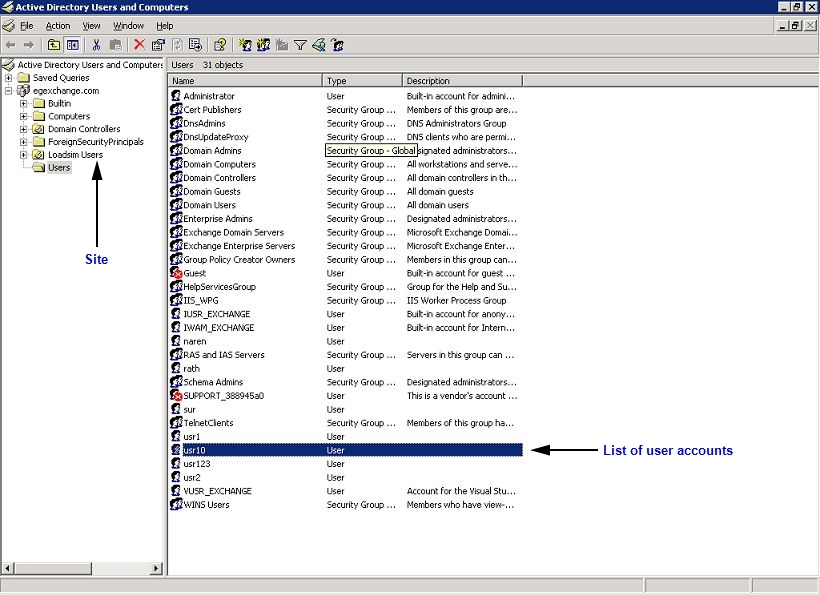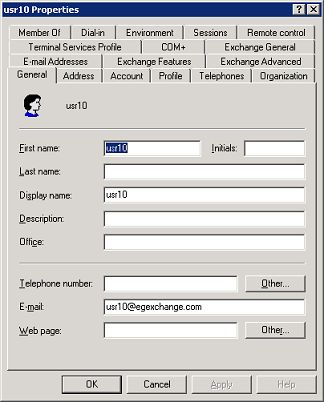Mapi Mail Service Test
This test monitors the availability and performance of a Microsoft Exchange mail server from an external perspective. The test mimics the mail client activity by using the MAPI (Messaging Application Programming Interface) for sending and receiving mails. This test is disabled by default. To enable the test, go to the enable / disable tests page using the menu sequence : Agents -> Tests -> Enable/Disable, pick Exchange as the desired Component type, set Performance as the Test type, choose the test from the disabled tests list, and click on the < button to move the test to the ENABLED TESTS list. Finally, click the Update button.
Note:
- This test uses only a Microsoft Outlook 2003 mail client for sending/receiving mails from the server; therefore, you can, if you so desire, configure a separate Outlook Mail client on the Exchange server for use by this test. Note that the XChgMailTest will not work with Microsoft Outlook Client 2000/2002.
- The eG external agent that is executing the XchgMail test, should be installed on a Windows 2000 server/client in the same domain as the Exchange 2000/2003 server.
- The Microsoft Outlook client used by the test should have been installed with the Collaboration Data Objects option enabled; to know how to modify your Outlook installation to enable this option.
- The administrator configuring the test should ensure that the mailbox being used in the test, exists on the Exchange 2000/2003 server.
- The eGurkhaAgent service should run using the account information of the user whose mailbox has been configured for the XchgMail test.
- MAPI should be configured in the Exchange 2000/2003 server.
- The Exchange client should exist in the system on which this test is executed.
Target of the test : An Exchange server
Agent deploying the test : An external agent
Outputs of the test : One set of results for every Exchange server being monitored.
| Parameters | Description |
|---|---|
|
Test Period |
How often should the test be executed. |
|
Host |
The IP address of the machine where the Exchange Server is installed. |
|
Port |
The port number through which the Exchange server communicates. |
|
IsPassive |
If the value chosen is Yes, then the Exchange server under consideration is a passive server in an Exchange cluster. No alerts will be generated if the server is not running. Measures will be reported as "Not applicable" by the agent if the server is not up. |
|
XchgMailboxName |
Specify the email ID on the Exchange server that is to be used by this test for sending/receiving mails. To know the email ID that corresponds to a user mailbox, refer to the procedure discussed in Determining email ID to be specified against XchgMailboxName. |
|
SMTPServer |
The IP address of the Exchange server being monitored; by default, the IP address of the host is displayed here. |
|
SMTPPort |
The port number at which the SMTPServer listens; by default, it is 25. |
|
ProfileName |
The profile that the email ID in the XchgMailboxName text box is configured to use. To know the existing profiles, open the Control Panel on the Microsoft Outlook client that houses the XchgMailbox that has been configured for this test, and double-click on the Mail option within. The Mail Setup dialog box will open. Click on the Show Profiles button therein to view the existing list of profiles. |
| Measurement | Description | Measurement Unit | Interpretation |
|---|---|---|---|
|
Can mails be sent? |
Indicates the availability of the mail server for receiving the mails sent by the test. |
Percent |
A value of 0 indicates that the test was not successful in sending a mail. Possible reasons for this could include the mail server being down, the network connection to the server not being available, or the test configuration information being incorrect. |
|
Sent messages |
Indicates the number of messages sent to the mail server. |
Number |
A value of –1 indicates that the mail server may be down or the configuration information may be incorrect. |
|
Avg time to send messages |
Indicates time taken to send a mail from to the mail server |
Secs |
A high value of this measure could indicate high network traffic or that the mail server is busy. |
|
Can mails be received? |
Indicates the availability of the exchange server for sending mails to the mail client |
Percent |
The value of 0 indicates that the test was not successful in receiving a mail message from the Exchange server. Possible reasons could be incorrect configuration information. |
|
Received messages |
Indicates the number of messages received by the mail client from the mail server |
Number |
The value of 0 indicates that the test was not successful in receiving mail messages from the Exchange server. The possible reasons could be:
|
|
Mail received time |
Indicates the time taken by the mail client to receive a mail from the mail server |
Secs |
A high value in this measure indicates that the mail server is busy or the network traffic is high. |
|
Avg roundtrip time |
The average of the round trip time (the time lapse between transmission and reception of a message by the server) of all the messages received by the mail server during the last measurement period |
Mins |
This is a key measure of quality of the mail service. An increase in the value of this measure may be indicative of a problem with the mail service. Possible reasons could include queuing failures, disk space being full, etc. |
|
Max roundtrip time |
The high water mark of the round trip time (the time lapse between transmission and reception of a message by the server) of all messages received by the mail server during the last measurement period |
Mins |
If the value of the Received messages measure is 1, then the value of the Max roundtrip time measure will be the same as the Avg roundtrip time. |
Determining email ID to be specified against XchgMailboxName
To know the email ID to be specified against XchgMailboxName, do the following:
- On the Exchange server, follow the menu sequence, Programs -> Administrative Tools (or Control Panel -> Administrative Tools) -> Active Directory Users and Computers.
-
Figure 5 will then appear. In the tree structure in the left pane of Figure 5, expand the node that corresponds to the Site on the Exchange server, and then, click on the Users folder within.

- From the list of user accounts displayed in the right pane, select the account that you intend using for the test and double-click on it.
-
Figure 6 will then appear displaying the properties of the chosen mailbox. For configuring the XchgMailboxName parameter of this test, specify the E-mail address displayed in Figure 6.




